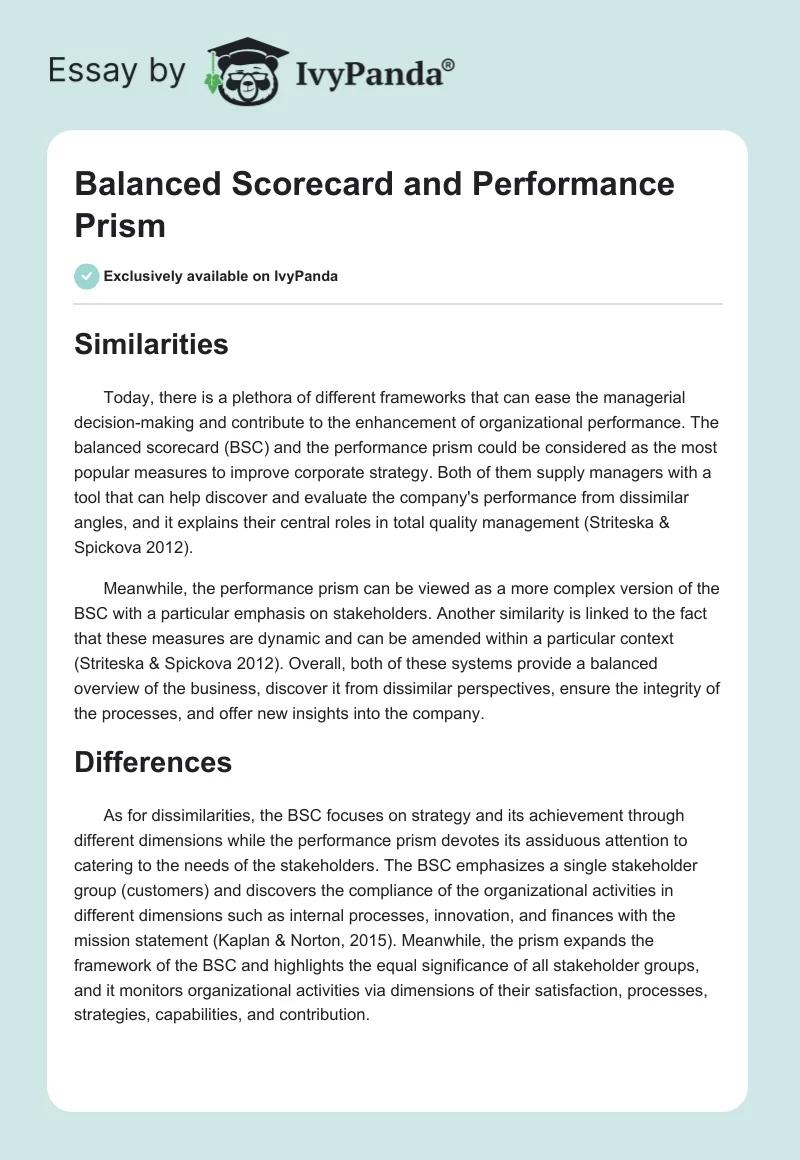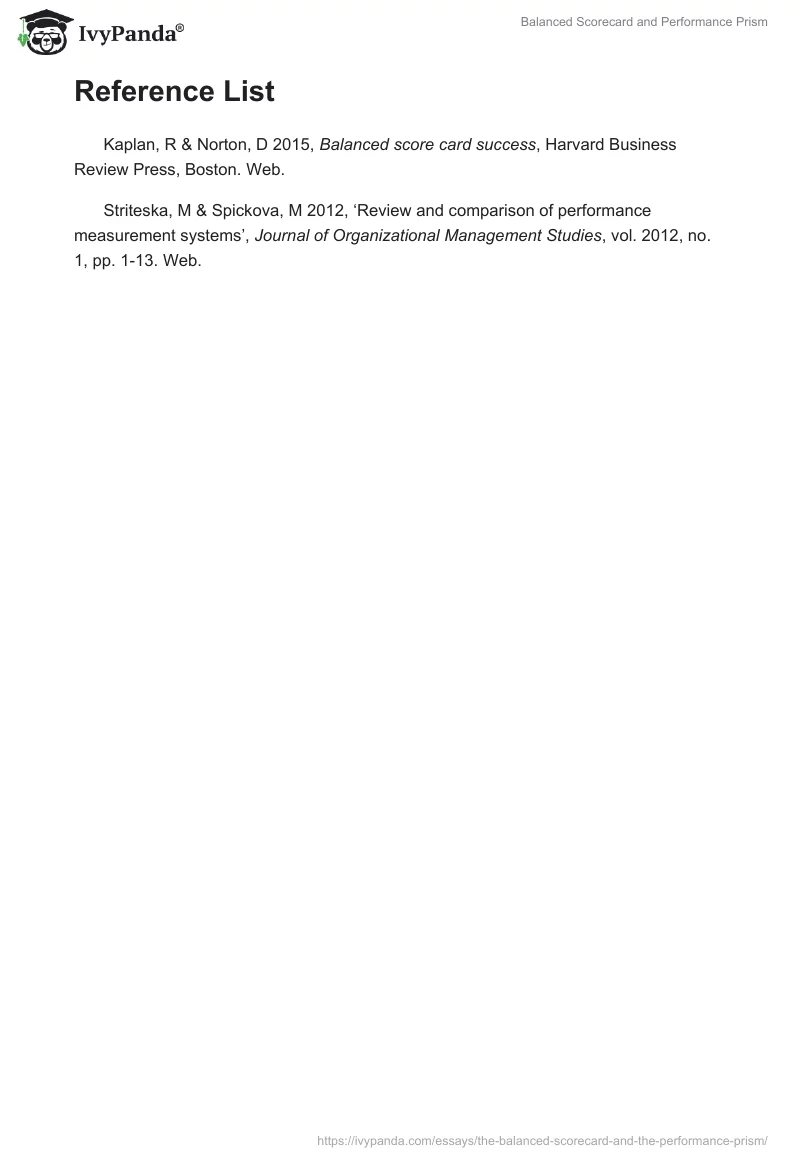Similarities
Today, there is a plethora of different frameworks that can ease the managerial decision-making and contribute to the enhancement of organizational performance. The balanced scorecard (BSC) and the performance prism could be considered as the most popular measures to improve corporate strategy. Both of them supply managers with a tool that can help discover and evaluate the company’s performance from dissimilar angles, and it explains their central roles in total quality management (Striteska & Spickova 2012).
Meanwhile, the performance prism can be viewed as a more complex version of the BSC with a particular emphasis on stakeholders. Another similarity is linked to the fact that these measures are dynamic and can be amended within a particular context (Striteska & Spickova 2012). Overall, both of these systems provide a balanced overview of the business, discover it from dissimilar perspectives, ensure the integrity of the processes, and offer new insights into the company.
Differences
As for dissimilarities, the BSC focuses on strategy and its achievement through different dimensions while the performance prism devotes its assiduous attention to catering to the needs of the stakeholders. The BSC emphasizes a single stakeholder group (customers) and discovers the compliance of the organizational activities in different dimensions such as internal processes, innovation, and finances with the mission statement (Kaplan & Norton, 2015). Meanwhile, the prism expands the framework of the BSC and highlights the equal significance of all stakeholder groups, and it monitors organizational activities via dimensions of their satisfaction, processes, strategies, capabilities, and contribution.
Reference List
Kaplan, R & Norton, D 2015, Balanced score card success, Harvard Business Review Press, Boston. Web.
Striteska, M & Spickova, M 2012, ‘Review and comparison of performance measurement systems’, Journal of Organizational Management Studies, vol. 2012, no. 1, pp. 1-13. Web.


